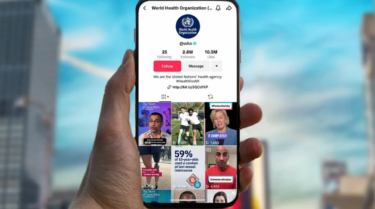Don Rodriguez, Director of Analytics at NetElixir, takes on the serious business of conversion paths and explains how it’s possible that only 1% of all sales came directly from social media sources, and how that affects your business.
Many experts would have you believing that social media marketing is a cure-all solution for driving online sales. However, our research has found that this position is oftentimes overstated.
NetElixir recently undertook a digital marketing study and came across some unexpected results. We looked at Multiple Path Attribution (MPA) – the online journey a customer makes from their first visit to your site through to the target action of making a purchase. In a dataset with over 500,000 transactions, and $58M in revenue across 8 industry sectors, our research showed that social media interactions often play a marginal role in conversion paths.
When conducting this study, there was an audible crack and our analysts’ jaws hit the ground when they found that conversion paths containing social media interactions only accounted for just over 1% ($622,000) of the $58 million in revenues measured.
This comes at a time when social media spending on advertising rose to $8.5 billion year-on-year in the U.S. alone, according to Business Insider. That might be something of a depressing figure in a world full of social media gurus and community managers all saying the opposite, so let’s break it down.
Not only was attribution to social media far lower than expected, but also interactions were not where we expected them. While most would say social media is likely to be the first stepping stone, we saw 68% of these actions were actually placed in the middle of the path, or at the last click.
However, it’s not all doom and gloom. Sources such as Chart Beat suggest that around a third of all traffic comes from unattributed social media sources, such as instant messages, emails, and mobile apps. When those sources start on a mobile device, a staggering 50% of that traffic could be arriving at your site’s doorstep unannounced. It is not uncommon today for some sites to have more than half of their traffic coming from mobile devices, so the Dark Social effect could have inhibited Social’s presence in our study.
That said, the extremely low showing is still noteworthy and stands in contrast to the buzz in the marketing space about investing in social conversations.
Why you need to focus on the big picture
A customer often takes many steps when they’re buying a product online – and in our analysis we saw journeys that ranged from a single-step to paths with over 300 interactions. Despite this, many SMEs still only focus on the first or last click a customer makes.
Unfortunately, this can be a big mistake. If your business is anything like those we studied, most of your conversions come from multiple online interactions. Using a single-touch attribution methodology conceals a potential wealth of insights that can be applied to your digital marketing spending more astutely.
While those 300+-step conversion paths might seem over the top, I should say that we suspect that many of those hits are “false positives.” These mostly likely result from the multi-tabbed browsing world we live in and Google’s default idle window, which restarts the visit counter every 30 minutes.
Still, the average conversion is 4.5 steps per conversion across all of the retail sectors we studied. If you ignore this multi-touch reality, you’re missing an opportunity to see a more accurate attribution picture of your business.
While it might be tempting to drop a campaign because it’s not appearing in your single touch ROI calculations, the fact is, you would be basing your assessment on incomplete information and possibly shooting your conversions in their well-traveled feet.
How do we make sure we’re getting our MPA right?
Although the marketing nirvana of tracking every single interaction remains a faint star in the distant sky, there are a few things you can do to vastly improve your accuracy today.
- Get to know how conversion paths affect your business
First of all, reduce your unattributed referrals as far as you can by defining your own custom channels in Google analytics. This will leave you with 2 segments: conversion you can attribute directly to ads and other marketing efforts, and a set of referrals whose revenue is so small you can save yourself the time of figuring out which channel they belong to.
A typical SME e-commerce operation might well define 15 to 20 different custom channels to track, in order to identify and segment 95+% of your traffic into buckets that have an associated investment.
Then focus on your Multi-Channel Funnel Reports in the Conversions section. Find which paths are strongest under Top Conversion Paths, see how long these paths are with Path Length, and measure time between first click and conversion with the Time Lag report.
2. Attribute the unattributable
Now, you can always ignore unattributable income, the Direct traffic segment in Google Analytics – and it might be best to do so if your other channels capture most of your revenue.
However, if not, you can either distribute the mystery income across the other revenue streams in an even way, or proportion the unattributed conversions in a way that makes sense to your team.
3. Experiment with different models
Leave the limited single interaction model behind. Try the different attribution models your analytics provider offers (Google has 7 preset models) to see the effect each one has on your ROI calculations.
Then try customizing your attribution models to see if you can achieve a higher return on your marketing investment.












